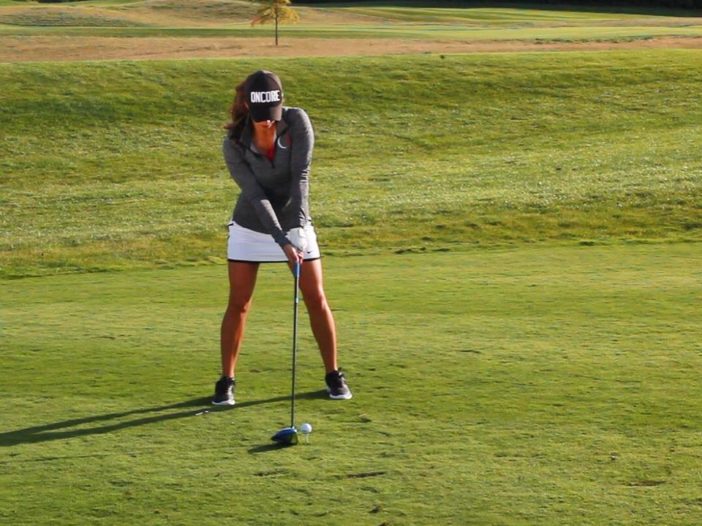
At OnCore Golf, we are all about giving players the proper tools and equipment to be able to play their best round of golf. However, as every golfer knows, all the gadgets and equipment can only go but so far in the performance of your game. It all starts with the player’s fundamental swing and mental capacity of knowledge to what needs to be done on the course to maximize their performance. Therefore, to make it accessible to our followers, we have put together a simple 5-tip list for informational videos and steps to take your game to the next level.
TIP #1: CORRECT YOUR SLICE
One of the most common misses for golfers out there today seem to be a slice. For a right handed golfer, that means the ball will fly far off to the right. For a lefty, it means the ball will slide far off to the left. Some players will correct it by aiming more left if they are a righty to correct it, but if we are being honest, that is not the best way to cure it; this temporarily masks the problem. If you want to hit it left, swing out to the right, and if you want the ball to go right, swing out to the left.
The video below by Rick Shiels will give you a better understanding in correcting your shot shape.
TIP TWO: CORRECT YOUR HOOK
Another common miss a golfer will make is what we call a “Hook” in the business. Hooks can be caused by many issues within a players swing, but it sometimes is resulted in the lower body (hips) not being turned quick enough compared to your shoulders and arms. To compromise, some players will flip their wrists, but that, once again, only masks the issue. My tip at OnCore is to be in sync with your hips and upper body (arms and shoulders) on the downswing, as well as keeping your right arm (if you’re a righty) tight to your ribs throughout your downswing to eliminate coming over the top and “double crossing” your shot.
By following this video, Chris Ryan, Senior Instructor at The Belfry will guide you further in success.
TIP THREE: CORRECT YOUR AIM
A big step in fine tuning your game is to make sure your aim is on point to the corresponding shot shape you have to reach the target line you are going for. The biggest misconception players have on their aim is that it is all in their feet. If you draw a line with the feet, it does go to the target. However, it is mostly where your club face is aimed at the start of your swing. Your feet, shoulders, and club face should be all in sync together given the target line you are going for, but by watching an instructional video by Mark Crossfield, PGA professional, you will be on the right path for correcting your aim.
TIP FOUR: BETTER WEDGE SHOTS
Every player has his or her own unique swing, but wedge game has a lot to do with touch and feel, which comes natural. Some players will say, “I chunk my shots all the time… I skull my shots all the time.” Well, the best advice I can give to people on this is that they need to make sure they keep their head still during all of their shots. If your head is bobbing up and down it forces your whole body to dip down or up causing chunked shots (if they dip down) and skulled shots (if they come up with their head). For better tempo on wedge game for distance control, follow a great quick video on this in our Play Better Series here at OnCore by LPGA Professional Courtney Mahon.
TIP FIVE: PUTTING CONTROL
Back of the leading hand on your putting stroke must be in sync with the leading face on your putter. Like wedge shots (another wedge tip) your leading hand/wrist should not collapse or bend in when making impact with the ball. Rather, it should have a slight bow/ be flush with the face of the club. Another tip while putting is making sure your shoulders are in alignment at address (square to your target line). In addition, for distance control be sure to grip the club lightly in pressure, which leads to good control from the impact sensation with the putter and the ball. Mentally feel the distance by practicing. For better grip technique at address watch this quick video by Steve Stricker from Golf Digest.
Every golfer is different in the way they address their ball, perform their swing, make impact with the ball, and hold their finish, but the fundamentals of the swing have to be there to ensure great results. At OnCore we fully understand and respect every player’s different shot shapes and habits.
I mean, look at Jim Furyk’s swing…
…What we’re trying to say is: You do not have to have the perfect swing to become a professional. OnCore golf does however, encourage all golfers of all ages to practice their game to get to the level they want to be at.







